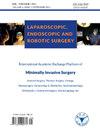Exploring a novel approach to assessing surgical team collaboration: Evidence of brain activity synchronization
Q3 Medicine
引用次数: 0
Abstract
Objective
Interpersonal brain synchronization (IBS) has emerged as a significant concept in understanding collaborative team dynamics, with functional near-infrared spectroscopy (fNIRS) proving to be a vital tool in its assessment. This review aims to collate and analyze the literature on the application of fNIRS in various team settings, emphasizing its potential utility in surgical environments.
Methods
A thorough search and screening process across multiple databases resulted in 17 studies being reviewed, with a focus on the utilization of fNIRS to measure IBS in different collaborative tasks. This review examined the tasks employed, participant demographics, organizational structures of teams, methodologies for IBS measurement, and correlations between brain synchronization and behavioral measurements.
Results
fNIRS emerged as a non-invasive, cost-effective, and portable tool, predominantly used to assess IBS in pair-based tasks with a variety of participant demographics. Wavelet transform coherence was the primary method used for measuring synchronization, particularly in the prefrontal brain region. A consistent correlation was found between increased brain synchronization and enhanced team performance, underscoring the potential of fNIRS in understanding and optimizing team dynamics.
Conclusion
This review establishes fNIRS as a promising tool for investigating the neural mechanisms underlying team cooperation, providing invaluable insights for potential applications in surgical settings. While acknowledging the limitations in the current literature, the review highlights the need for further research with larger sample sizes and varied task complexities to solidify the understanding of IBS and its impact on team performance. The ultimate goal is to leverage fNIRS in assessing and improving surgical team dynamics, contributing to improved patient outcomes and safety.
探索评估外科团队合作的新方法:大脑活动同步的证据
人际大脑同步(IBS)已经成为理解协作团队动力学的一个重要概念,功能近红外光谱(fNIRS)被证明是评估其重要工具。本综述旨在整理和分析fNIRS在不同团队环境下的应用文献,强调其在外科环境中的潜在应用。方法在多个数据库中进行了彻底的搜索和筛选过程,最终审查了17项研究,重点是利用近红外光谱测量不同协作任务中的IBS。这篇综述研究了所使用的任务、参与者的人口统计、团队的组织结构、IBS测量的方法,以及大脑同步和行为测量之间的相关性。结果:近红外光谱(nirs)作为一种非侵入性、成本效益高的便携式工具,主要用于对各种参与者进行配对的IBS评估。小波变换相干性是测量同步的主要方法,尤其是在前额叶脑区。研究发现,大脑同步性的提高与团队绩效的提高之间存在一致的相关性,强调了fNIRS在理解和优化团队动态方面的潜力。结论本综述建立了fNIRS作为研究团队合作神经机制的一个有前途的工具,为外科环境的潜在应用提供了宝贵的见解。虽然承认当前文献的局限性,但该综述强调需要进一步研究更大的样本量和不同的任务复杂性,以巩固对IBS及其对团队绩效的影响的理解。最终目标是利用fNIRS来评估和改善外科团队的动态,有助于改善患者的预后和安全性。
本文章由计算机程序翻译,如有差异,请以英文原文为准。
求助全文
约1分钟内获得全文
求助全文
来源期刊

Laparoscopic Endoscopic and Robotic Surgery
minimally invasive surgery-
CiteScore
1.40
自引率
0.00%
发文量
32
期刊介绍:
Laparoscopic, Endoscopic and Robotic Surgery aims to provide an academic exchange platform for minimally invasive surgery at an international level. We seek out and publish the excellent original articles, reviews and editorials as well as exciting new techniques to promote the academic development.
Topics of interests include, but are not limited to:
▪ Minimally invasive clinical research mainly in General Surgery, Thoracic Surgery, Urology, Neurosurgery, Gynecology & Obstetrics, Gastroenterology, Orthopedics, Colorectal Surgery, Otolaryngology, etc.;
▪ Basic research in minimally invasive surgery;
▪ Research of techniques and equipments in minimally invasive surgery, and application of laparoscopy, endoscopy, robot and medical imaging;
▪ Development of medical education in minimally invasive surgery.
 求助内容:
求助内容: 应助结果提醒方式:
应助结果提醒方式:


